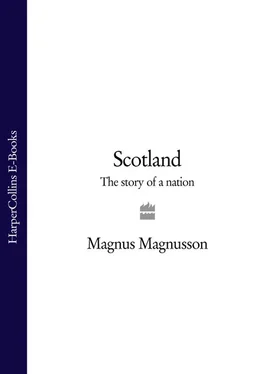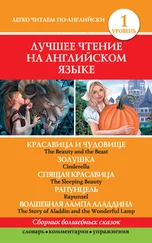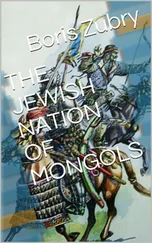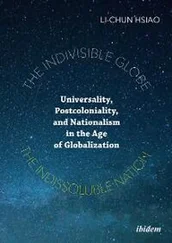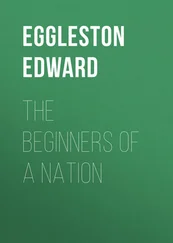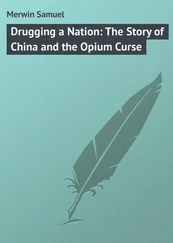1 ...7 8 9 11 12 13 ...20 Men went to Catraeth, they were renowned.
Wine and mead from gold cups was their drink.
A year in noble ceremonial ,
Three hundred and sixty gold-torqued men.
Of all those who charged, after too much drink ,
But three won free through courage in strife ,
Aeron’s two war-hounds and tough Cynon ,
And myself, soaked in blood, for my song’s sake.
Gododdin’s war-band on shaggy mounts ,
Steeds the hue of swans, in full harness ,
Fighting for Eidyn’s treasure and mead.
On Mynyddawg’s orders
Shields were battered to bits ,
Sword-blades descended
On pallid cheeks.
They loved combat, broad line of attack:
They bore no disgrace, men who stood firm.
FROM THE GODODDIN (TRANS. JOSEPH P. CLANCY)
It was the very stuff of heroic legend, that ferocious, unforgiving battle.
Legendary or not, historical fact or poetic fiction, the power of the Gododdin was certainly broken a few years later. In 638 Din Eidyn was besieged and captured by the avenging Angles, and the place seems then to have received the anglicised name Edinburgh, by which it is known today.
It may come as a surprise, at first blush, to think of Angles in Scotland – the Angles from northern Germany who had come over to the south-east of England, first in the fourth century as invited auxiliaries to assist the Romans in keeping their hold on Britannia but later, in the fifth century, as invaders bent on conquest. They had created their own kingdom in England, ‘Anglia’, in the area of today’s East Anglia. They were a tough warrior people, the Angles, and in 547, according to the Venerable Bede, the Anglian King Ida thrust his way far northwards over the Humber, across the Tees and the Tyne, and established his royal seat on the formidable fortress crag of Bamburgh on the north-eastern coast of England. By the year 605 all this territory had been consolidated into the Kingdom of Northumbria (literally, ‘north of the Humber’) under King Æthelfrith, whom Bede described as ‘a very powerful and ambitious king’.
We must be careful, when we talk about the ancient name Northumbria, not to be misled by the boundaries of today’s Northumberland. Northumbria at its greatest extent in the seventh century extended all the way north (after the capture of Edinburgh in 638) to the Firth of Forth and even beyond, perhaps to the Mounth (the eastern extension of the Grampian massif). In that context, it is possible to see the heroic raid by the Gododdin deep into Yorkshire as an abortive preemptive strike against the growing imperial ambitions of the kingdom of Northumbria.
After the collapse of the Gododdin, the aggressive expansionism of the Angles of Northumbria extended their dominance beyond Edinburgh into the southern part of Pictland; the power-centre of Pictland had by then moved from Inverness south to Abernethy, perhaps, and/or Scone, beside today’s city of Perth, and a new name was being applied to it – the kingdom of ‘Fortriu’. From 653 to 685 much of the southern part of this area seems to have been under Northumbrian control. There was an attempted Pictish uprising in 672, but this was put down with the utmost ferocity and many of the Pictish aristocracy were massacred. The climax came in 685, with a battle between the Picts and the Northumbrians in the Angus glens, north of the estuary of the Tay.
The Battle of Dunnichen (Nechtansmere): 685 1
In 685 a check was given to the encroachment of the Saxons by the slaughter and defeat of their king Egfrid at the battle of Drumnechtan, probably Dunnichen; and the district south of the Forth was repeatedly the scene of severe battles between the Picts and the Northumbrians, the latter striving to hold, the former to regain, these fertile provinces.
WALTER SCOTT, HISTORY OF SCOTLAND , VOL. I (1830)
In front of the parish church in the village of Dunnichen, near Forfar in Angus, a commemorative cairn was erected by Letham and District Community Council in 1985. It was set up to mark the 1300th anniversary of one of the most significant battles of ‘Dark Age’ Scotland: a battle which, until recently, was referred to as ‘Nechtansmere’ but is now called the Battle of Dunnichen (as Walter Scott called it in his History of Scotland). ‘Nechtansmere’ is the name by which the battle was known from Northumbrian sources.
In 685 the ruler of Northumbria was a headstrong king named Ecgfrith. Against the advice of all his counsellors and of St Cuthbert, Bishop of Lindisfarne, who had a premonition of disaster, he decided on a massive cavalry attack on Pictland, under its new king, Bridei mac Bili (who also happened to be Ecgfrith’s kinsman). Ecgfrith probably marched through the Lowlands to Edinburgh, then may have crossed the Forth at Stirling and the Tay at Perth. As he advanced up Strathmore from Perth, he was diverted from his planned route by the Picts; using classic guerrilla tactics, they fell back towards territory of their own choosing rather than offering pitched battle in open country.
The earliest primary account of the Northumbrian invasion of 685 was written, forty-five years later, by the Venerable Bede:
King Ecgfrith … rashly led an army to ravage the province of the Picts. The enemy pretended to retreat, and lured the king into narrow mountain passes, where he was killed with the greater part of his forces on the 20th of May and the 15th [year] of his reign.
It was somewhere in these ‘narrow mountain passes’ that the Picts ambushed the invaders on 20 May 685 with devastating effect. It has not proved possible to identify the location with certainty. The topography in this southern, fertile part of Angus is open and rolling (the terrain is much more mountainous farther to the north-west); but Bede had never been to Scotland, and his description doubtless relied on exaggerated accounts brought back by the survivors to justify the defeat. A plausible scenario can be made for an ambush somewhere in the Dunnichen area, probably between the high ground of Dunnichen Hill (‘Dun Nechtan’) and the marshy ground known later as Dunnichen Moss (‘Nechtan’s mire’); the ‘mere’, or marshland, has now been reconstituted as a large pool by the farmer of Dunnichen Mains farm. The identification of ‘Nechtansmere’ with Dunnichen Moss is purely circumstantial, and not all scholars agree with it; but it is attractive, nonetheless.
In this scenario, the Pictish cavalry would have lured Ecgfrith into an ambush by feigning fear, until Ecgfrith found himself marching eastward past Dunnichen Hill alongside an extensive stretch of ‘mere’ at the base of the hill. At that point the trap was sprung: the main Pictish forces came swarming down from behind the top of Dunnichen Hill to attack the Northumbrian cavalry on the flank and cut off its retreat. The Northumbrians were virtually wiped out and Ecgfrith was killed.
In the churchyard of Aberlemno, some ten kilometres to the north of Dunnichen, there is a magnificent Pictish cross-slab (a fawn-coloured sandstone slab with a cross carved on it). The cross, richly decorated in high relief, is on the front of the slab; on the reverse, under two Pictish symbols, is depicted a battle-scene in three tiers. It has been called a ‘tapestry in stone’, but it is more than that: it is a brilliantly detailed despatch by a war-artist from the front line. It portrays the battle in a series of four vivid cartoon panels. The combatants are carefully distinguished: bare-headed Pictish warriors confronting (and eventually defeating) opponents who are wearing Anglo-Saxon helmets with long nose-guards and distinctive neck-collars. The Pictish cavalrymen are riding long-tailed ponies which they control with their knees and feet, leaving both hands free to wield their weapons, whereas the Northumbrians on their heavier, short-tailed (‘bang-tailed’) horses need to use one hand for the reins. The Pictish infantrymen are drawn up in ranks with a swordsman in front, defended by a warrior behind him wielding a long thrusting-spear and another armed with a throwing-spear.
Читать дальше
